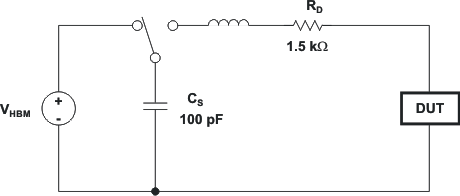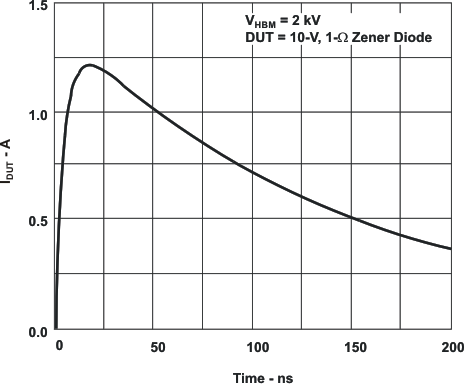JAJSUZ5A July 2007 – July 2024 TRS208
PRODUCTION DATA
- 1
- 1 特長
- 2 アプリケーション
- 3 概要
- 4 Pin Configuration and Functions
- 5 Specifications
- 6 Parameter Measurement Information
- 7 Device Functional Modes
- 8 Application and Implementation
- 9 Device and Documentation Support
- 10Revision History
- 11Mechanical, Packaging, and Orderable Information
パッケージ・オプション
メカニカル・データ(パッケージ|ピン)
サーマルパッド・メカニカル・データ
発注情報
8.1.4 Human-Body Model (HBM)
The HBM of ESD testing is shown in Figure 8-1, while Figure 8-2 shows the current waveform that is generated during a discharge into a low impedance. The model consists of a 100pF capacitor, charged to the ESD voltage of concern and subsequently discharged into the DUT through a 1.5kΩ resistor.
 Figure 8-1 HBM ESD Test Circuit
Figure 8-1 HBM ESD Test Circuit Figure 8-2 Typical HBM Current Waveform
Figure 8-2 Typical HBM Current Waveform